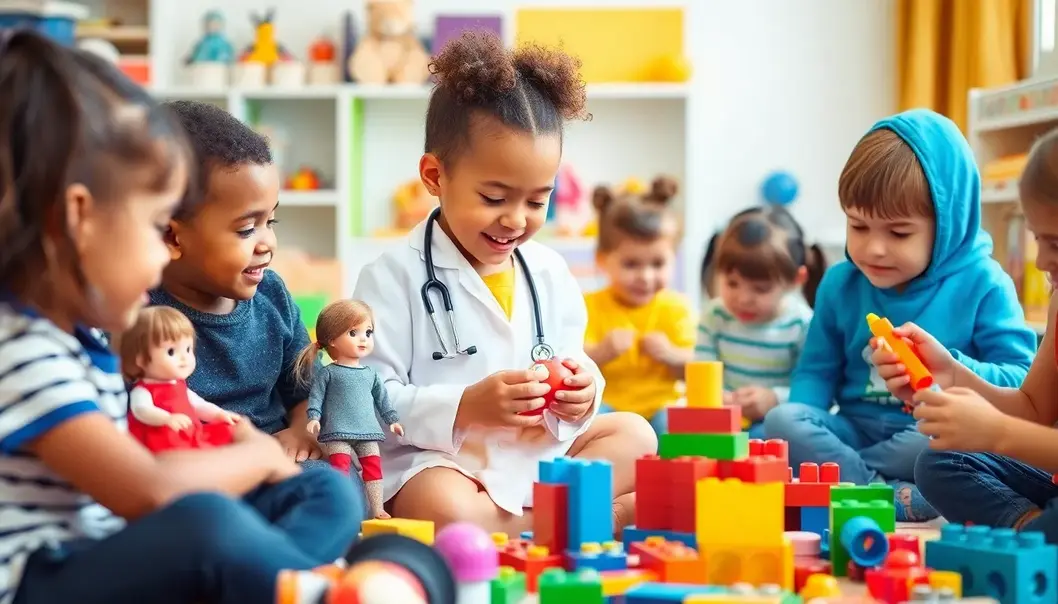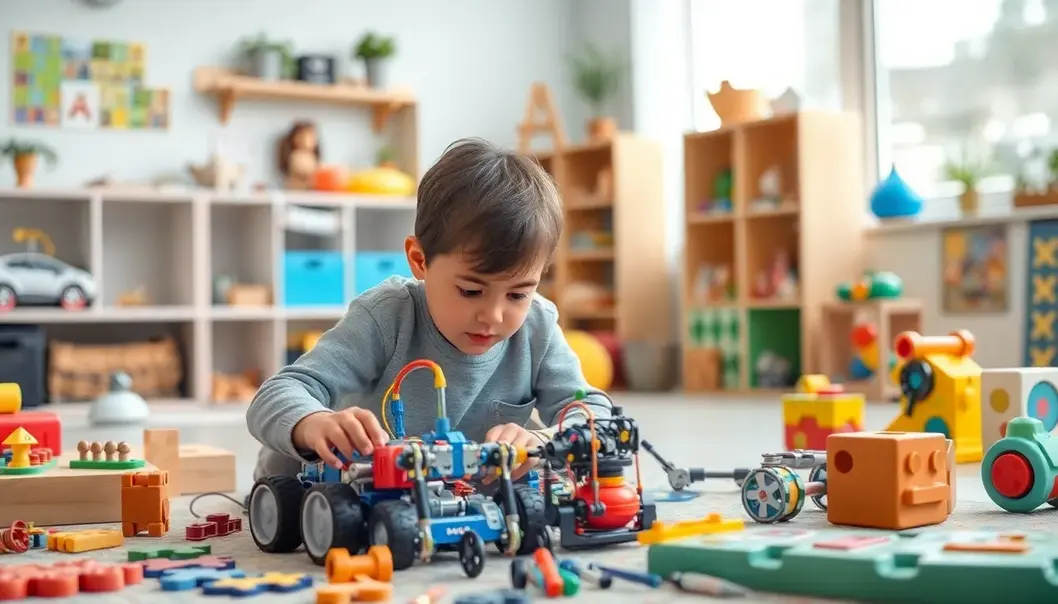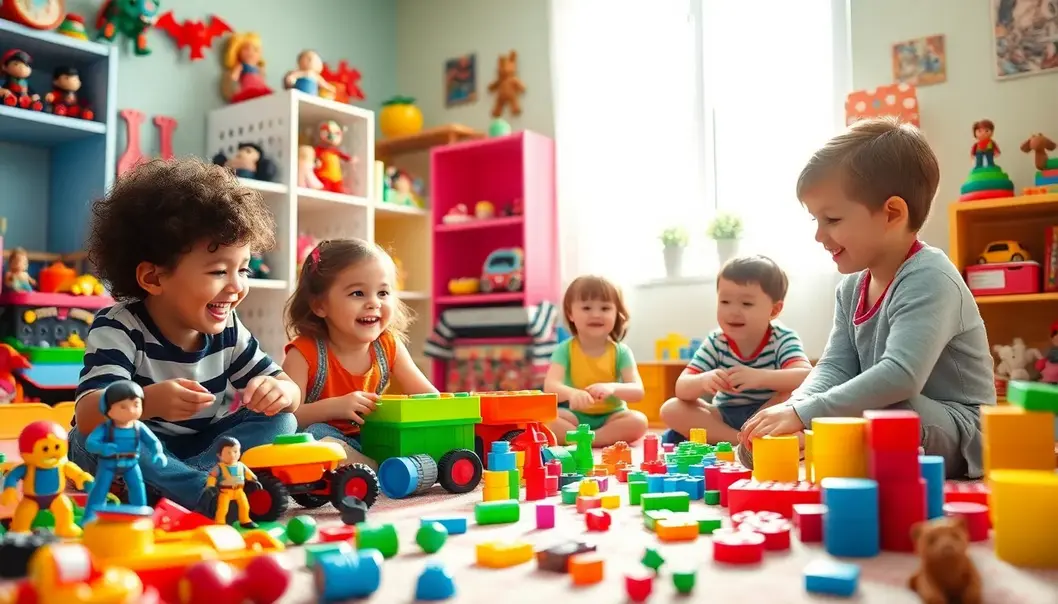Childhood and toys are as inseparable as peanut butter and jelly. The magnetic charm of toys enthralls kids with promises of adventure, learning, and pure joy. But beyond their vibrant colors and fun shapes, toys represent much more—they are instruments nurturing imagination, creativity, and even social skills. This bond is more than material; it’s rooted deep in cognitive and emotional development. From building blocks that construct more than just towers, to dolls and action figures that inspire storytelling, the allure of toys lies in their ability to shape budding minds. Let’s delve into why toys hold such an irresistible appeal for kids and how they spin the wheels of youthful exuberance and growth.
The Role of Imagination in Play

Imagination is the heart of children’s play, enabling them to explore possibilities and delve into worlds of their own making. Toys serve as pivotal instruments in this imaginative journey, acting as catalysts that unlock creativity and cognitive development. Through imaginative play, children learn to navigate the complexities of the world, while honing their problem-solving abilities and fostering cognitive flexibility.
Classic toys like dolls and building blocks hold timeless appeal in nurturing imagination. Dolls, for instance, offer children the opportunity to create elaborate narratives. In these narrative-driven playscapes, dolls become characters in a story dictated solely by the child’s imagination. Whether it’s envisioning a tea party with friends or an adventure through a mythical forest, such scenarios allow children to experiment with social roles and develop empathy by seeing the world from different perspectives.
Building blocks, on the other hand, challenge kids to construct their own realities. As children stack, rearrange, and balance blocks, they are not only building towers but also crafting entire worlds. This form of play requires them to engage in problem-solving, testing hypotheses, and learning from structural failures or successes. These activities nurture spatial awareness and critical thinking, skills that are foundational in academic learning later in life.
In facilitating role-play, toys provide an essential platform for social interaction. Shared play experiences with peers offer children the chance to negotiate rules, confront dilemmas, and devise collective outcomes, fostering social skills crucial for real-life interactions. The dynamics of cooperative play encourage children to listen, adapt, and collaborate—skills that will benefit them in numerous social settings beyond playtime.
As children grow, their imaginative capacities evolve, enriched continually by these play experiences. Imaginative play is not merely entertainment; it’s an early form of storytelling where children are both creators and participants. By engaging in imaginative play, children learn to see beyond the tangible, envisioning new possibilities and adaptable solutions. This imagination-driven play lays the groundwork for innovative thinking and adaptability in a rapidly changing world, linking seamlessly to the subsequent exploration into the learning potential harnessed through toy interaction.
Learning and Skill Development Through Toys

Toys often serve as essential tools in a child’s developmental journey, offering much more than just a means to pass the time. They act as catalysts for learning, providing children with hands-on experiences that complement what they encounter in educational settings. Engaging with toys can help build essential skills that span cognitive, motor, and social domains.
Consider the simple puzzle. For young minds, it is not merely about fitting pieces together; it is an exercise in patience, problem-solving, and logical thinking. Through trial and error, children learn to recognize patterns and develop spatial awareness. Moreover, the sense of accomplishment they feel upon completing a puzzle reinforces perseverance.
Educational games further extend learning potential by transforming abstract concepts into tangible experiences. Through playful interaction, children grasp foundational subjects like numbers and shapes. Games often incorporate logical sequences, encouraging kids to think several steps ahead and anticipate outcomes—skills that lay the groundwork for mathematical and strategic thinking.
Interactive toys that focus on STEM (science, technology, engineering, and mathematics) open avenues for exploration and experimentation. Kits designed around these disciplines introduce children to concepts like circuitry, coding, and engineering fundamentals in an approachable way. When children construct and deconstruct, they engage in critical thinking, learning to hypothesize and draw conclusions based on their observations.
Beyond cognitive skills, toys also play a pivotal role in developing social competencies. Board games, for instance, are excellent for teaching patience and turn-taking. They provide a platform for children to navigate social rules, negotiate, and collaborate, building emotional intelligence in a low-stakes environment. These interactions are foundational for later life, equipping children with the ability to work in teams and resolve conflicts amicably.
In every play scenario, toys are more than mere objects; they are gateways to understanding the world. By embedding learning naturally into play, toys help children discover knowledge as an enjoyable pursuit. The seamless integration of learning into play ensures that children remain curious and motivated, a mindset that fosters lifelong learning and adaptation.
Engagement with these toys also mirrors other nurturing environments such as playing with pets. For further insights into creating enriching experiences at home, you might explore resources like this blog that discuss how to craft supportive and exciting environments for growth.
Final words
Understanding the psychology behind why kids love toys sheds light on their pivotal role in development. As catalysts for imagination and learning, toys are essential in shaping how children perceive and interact with the world. They offer endless opportunities for exploration, growth, and fun, proving that even in today’s digital era, the intrinsic value and charm of toys remain timeless.
Unlock the world of educational toys today and enhance your child’s learning and play experience.
Learn more: https://www.toyinspiration.com
About us
Toy Inspiration offers a wide range of educational toys that blend play with learning, helping children develop critical skills while having fun. Explore our collection today!



